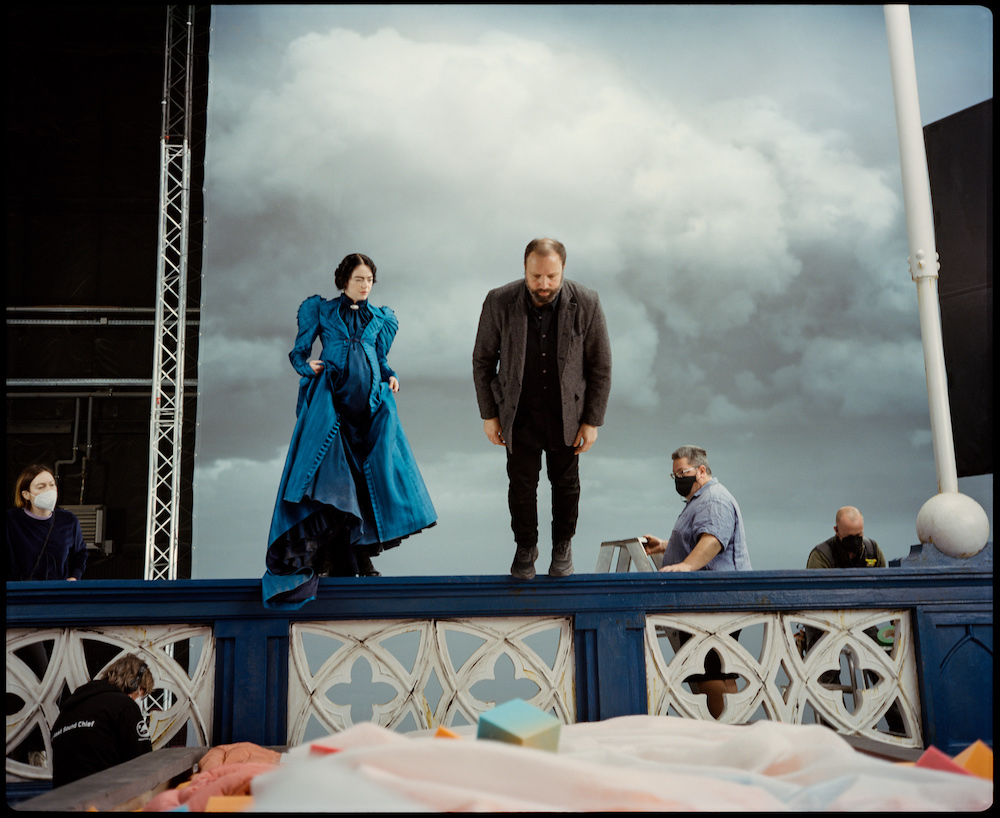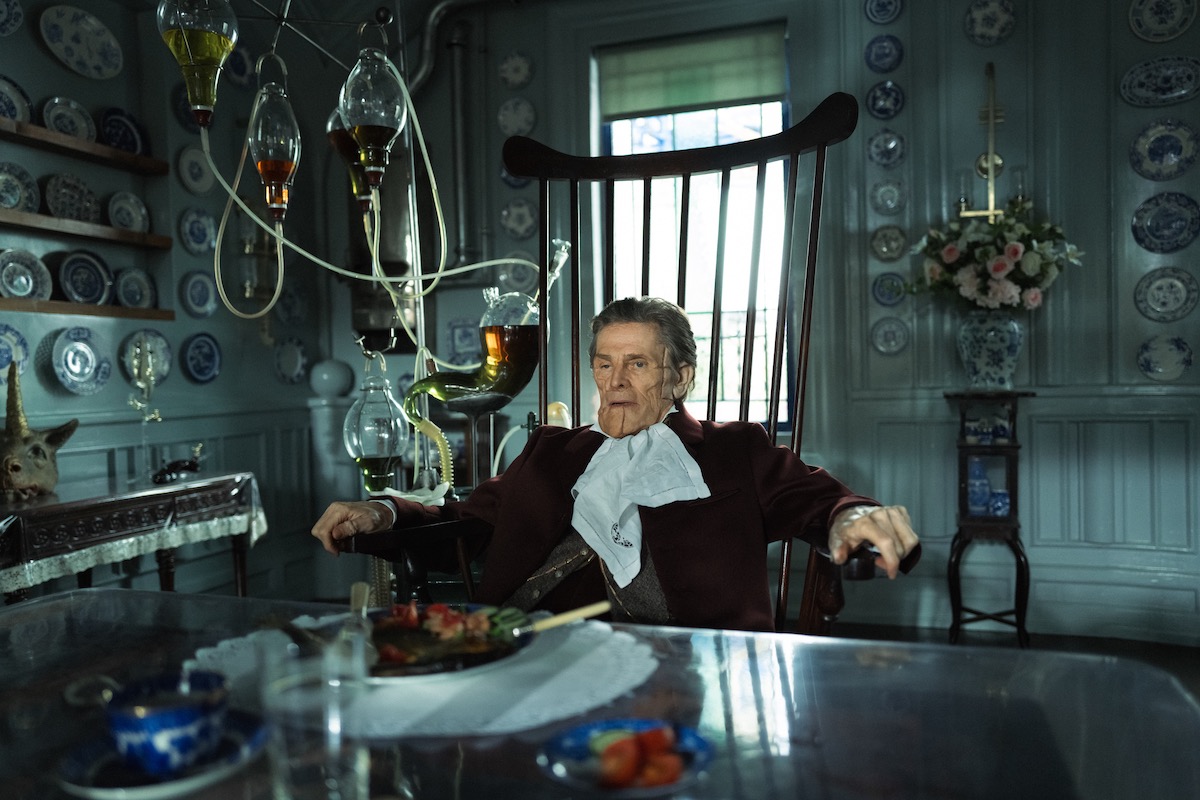If you liked it Poor creatures!, the latest film by Yorgos Lanthimos, nominated for 11 Academy Awards and currently in first place in the ranking of the highest grossing Italian box office, then you will be (also) captivated by its setting, the sets and the costumes that always to be thrilled again, to be enchanted. Remember the steampunk aesthetic. But let's go one step at a time. The term “steampunk” was coined in the 1980s by writers such as KW Jeter to describe fictional works that mixed steam technology and fantastical elements in a 19th-century historical context. However, in reality, he is originally inspired by literary works such as those of authors such as Jules Verne and HG Wells. Steampunk works often imagine a world where steam-powered technology predominates, with complicated machinery and a mix of futuristic and retro elements; Just like the world in which Bella Baxter (Emma Stone) lives Poor creatures!populated by air-powered flying machines, imposing but state-of-the-art ships, complex contraptions made of wood and brass, and mutant animals stitched together Frankenstein-style.
Above all, the pseudo-Victorian style of Bella's clothing: costumes that do not perfectly reflect the era in which the action takes place, but are able to convey a suggestion, an idea of the convergence between past and future, as well as an important look mediate in the emancipation of character. In fact, steampunk fashion is not limited to the faithful reproduction of historical clothing, but combines ancient elements with modern technology and imagination, giving life to extraordinary creations that combine the romance of the past with fantastic and futuristic elements. Accessories such as magnifying glasses, metal gears and mechanical details become integral parts of clothing and accessories, transforming fashion into a fantastic theatrical experience. A very good example is Wild, wild west (1999), in which the steampunk style is bent into a bizarre context of spaghetti westerns or fantasy westerns, between mechanical tarantulas as a means of transport and costumes that merge the world of saloons with an anachronistic science fiction and a 19th century Taste.
A scene from the film. Photo: Searchlight Pictures
There costume designer Holly Waddington, the same one who designed the costumes Barbie And Anna Kareninaactually explained that she took inspiration for Bella Baxter's raven hair from an Egon Schiele painting and for her clothes from a range of references to fashion history: from Schiaparelli's 1930s creations to the ankle boots that pay homage to Courrèges, right down to the yellow shorts, in the scenes shot in Lisbon where Jodie Foster is the reference taxi driver. Gorgets, corsets and chiffon layers are the constant elements that accompany Povere's gothic journey Creatures!, in which each piece of Bella's wardrobe goes through her character's discovery and sexual liberation, blending past and contemporary details in the steampunk tradition, but in a much more subtle way. Everything plays on the pointed silhouettes of the outfits, which often emphasize oversized shoulders or exaggerated volumes; On the one hand, draw inspiration from the Victorian and austere look of the upper class, and on the other hand, create triumphant and conceptual designs to show Bella's unique vision and how her body and mentality change as the film progresses before our eyes. Little curiosity: One of the most daring looks, besides the latex cape, is certainly the blue dress that Emma Stone wears at the beginning of the film before she jumps into the water when she is “still” Victoria Blessington. Well, to get that dark shade that fits the atmosphere of the film, the dress was apparently dyed blue up to twenty times. The same goes for the creation of the mango yellow look: an obsession with color that, combined with that of clothing, helps create a grammar of Bella's changes.

Emma Stone on set with Yorgos Lanthimos. Photo: Atsushi Nishijima/Searchlight Pictures
Other factors typical of the steampunk scenario can be traced in the theme of the film itself: what connects Bella with the monstrous-looking surgeon-demiurge (Willem Dafoe) obviously refers to the Frankenstein by Mary Shelley, one of the novels dear to steampunk culture, in which the conflicting relationship between body, consciousness and technology is profound and contradictory. On the other hand, alchemy, magic and industrial or cyberpunk transplants fit perfectly into the aesthetic canon of steampunk. Among the numerous films that present these proposals very well we can mention Mortal machines (2018) is set in a post-apocalyptic world where entire self-driving cities fight among themselves to power the engines that support them. The architecture inspired by the Belle Époque in contrast to the vehicles of the past powered by so-called clean energies (locomotives, airships, submarines) are the classic pioneering images of a future past that we also see Poor creatures! and which trigger a short-circuit with other possible and catastrophic worlds, which is sometimes extremely representative of a certain criticism of the society in which we live.

Willem Dafoe aka Dr. Godwin Baxter. Photo: Atsushi Nishijima/Searchlight Pictures
Just think of Terry Gilliam's lysergic visions of cinema in the 1980s, particularly a The Adventures of Baron Munchausen And Brazil, in which the most industrialized neighborhoods become prisons or tin cathedrals that capture and dictate the way people live. In this sense, but in a much more classic and accessible tone, we find some traces of this genre even in very different films such as: Hugo Cabret by Martin Scorsese, Sherlock Holmes by Guy Ritchie, in the saga of Lemony Snicket and partly in the electrical magic that characterizes them The prestige by Christopher Nolan. If we widen our gaze a little, we discover that Japanese animation cinema is also deeply linked to the steampunk aesthetic: from Galaxy Express 999 To The Secret of the Blue Stonein transit Neon Genesis Evangelion And The walking castleThey all seem like science fiction stories written at the end of the 19th century, but with an extremely compelling and contemporary flavor.
With Poor creatures!One has the feeling that nostalgia for the past, coupled with the desire to experiment and imagine an alternative future, opens a way to think about identity and the possibility of rewriting the history of society, albeit starting from absurd and not conformist ideas We usually see them in the dystopian horror films of Carpenter or Cronenberg. An evolution of the steampunk style – revised and updated for the general public – which, through the combination of books, the history of cinema and customs, seems destined to be a significant and inspiring template for the worlds (cinematic and otherwise) to come to stay.

